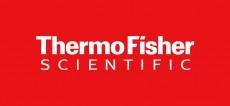Solvay doubles H2O2 output
Solvay Interox industrial pilot plant in Povoa, Portugal, using a
new high-yield process.
H2O2 is used in pharmacology, as an intermediate in the chemicals industry and as a bleaching agent. The production capacity of the pilot plant will go from 5 to 10 kilotonnes a year in 2003, with no increase in feedstock and a minimal investment of cash.
"With this technological breakthrough, Solvay's competitiveness is leaping ahead," commented Eric Mignonat, managing director of Solvay's H2O2 business. "It paves the way for capacity extensions at low cost and for the building of landmark megaplants to serve new applications," he said.
The high-yield process will also be implemented at OY Finnish Peroxides, a joint venture with UPM-Kymmene of Finland, which is expanding capacity to meet the expected increase in demand for H2O2 on the Finnish market.
Until very recently, the Solvay plants produced H2O2 solution at a yield of around 14 grams per kg of working solution. Solvay's R&D in Belgium and Portugal has succeeded in increasing this yield to 20 grams.
To do so, the team experimented with the distribution of ATQ type quinones (70 per cent) and AQ type quinones (30 per cent) in order to obtain an optimal mixture of useful quinones. It is the quinones present in the working solution that, after being hydrogenated, then oxidised, produce H2O2 solution. While the AQ quinone can be obtained industrially, the ATQ quinone must be produced on site with, until now, low conversion rates and a slow process that took several months.
Meanwhile, Solvay has also entered into an agreement with BASF, whereby the Belgian firm would become BASF's partner for the supply of H2O2 for the production of propylene oxide.









